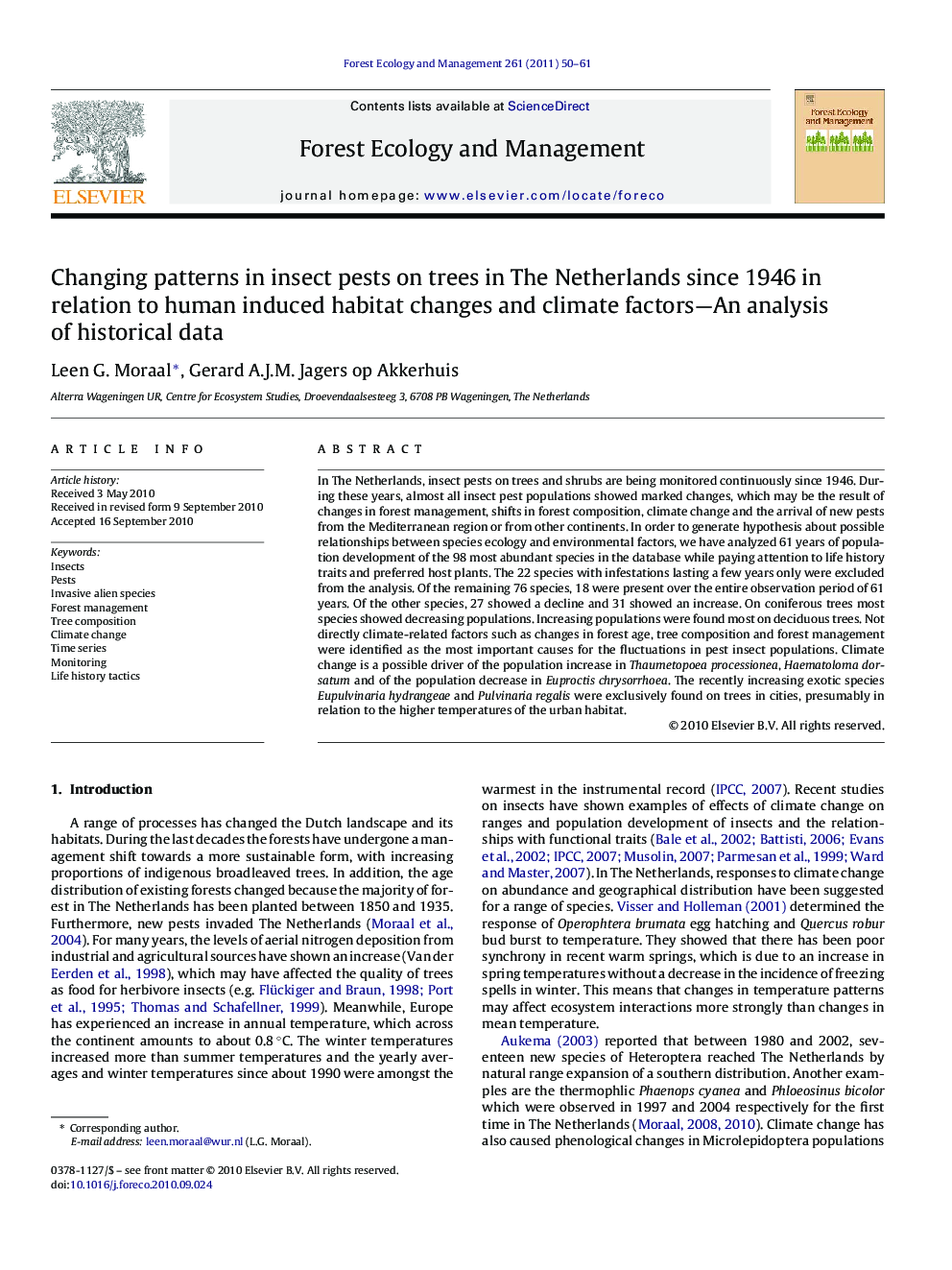| Article ID | Journal | Published Year | Pages | File Type |
|---|---|---|---|---|
| 88124 | Forest Ecology and Management | 2011 | 12 Pages |
In The Netherlands, insect pests on trees and shrubs are being monitored continuously since 1946. During these years, almost all insect pest populations showed marked changes, which may be the result of changes in forest management, shifts in forest composition, climate change and the arrival of new pests from the Mediterranean region or from other continents. In order to generate hypothesis about possible relationships between species ecology and environmental factors, we have analyzed 61 years of population development of the 98 most abundant species in the database while paying attention to life history traits and preferred host plants. The 22 species with infestations lasting a few years only were excluded from the analysis. Of the remaining 76 species, 18 were present over the entire observation period of 61 years. Of the other species, 27 showed a decline and 31 showed an increase. On coniferous trees most species showed decreasing populations. Increasing populations were found most on deciduous trees. Not directly climate-related factors such as changes in forest age, tree composition and forest management were identified as the most important causes for the fluctuations in pest insect populations. Climate change is a possible driver of the population increase in Thaumetopoea processionea, Haematoloma dorsatum and of the population decrease in Euproctis chrysorrhoea. The recently increasing exotic species Eupulvinaria hydrangeae and Pulvinaria regalis were exclusively found on trees in cities, presumably in relation to the higher temperatures of the urban habitat.
Research highlights▶ We have analyzed an unique nationwide database of 61 year of monitoring of insect pests on trees and shrubs. Within this period, many changes in insect abundances and insect species have been observed. In our study we were able to find important driving factors behind these population shifts. ▶ As the main reason for the population changes we identified human induced habitat change, shifts in the age of the planted forests, changes in forest management and tree composition. Climate change was a possible driver of population increase in Thaumetopoea processionea, Haematoloma dorsatum and of population decrease in Euproctis chrysorrhoea. ▶ We found strong arguments that our recent warm and humid winters (caused by climate change) benefit a relative better survival of egg-overwintering insects above insects which hibernate as larva, pupa or adult.
